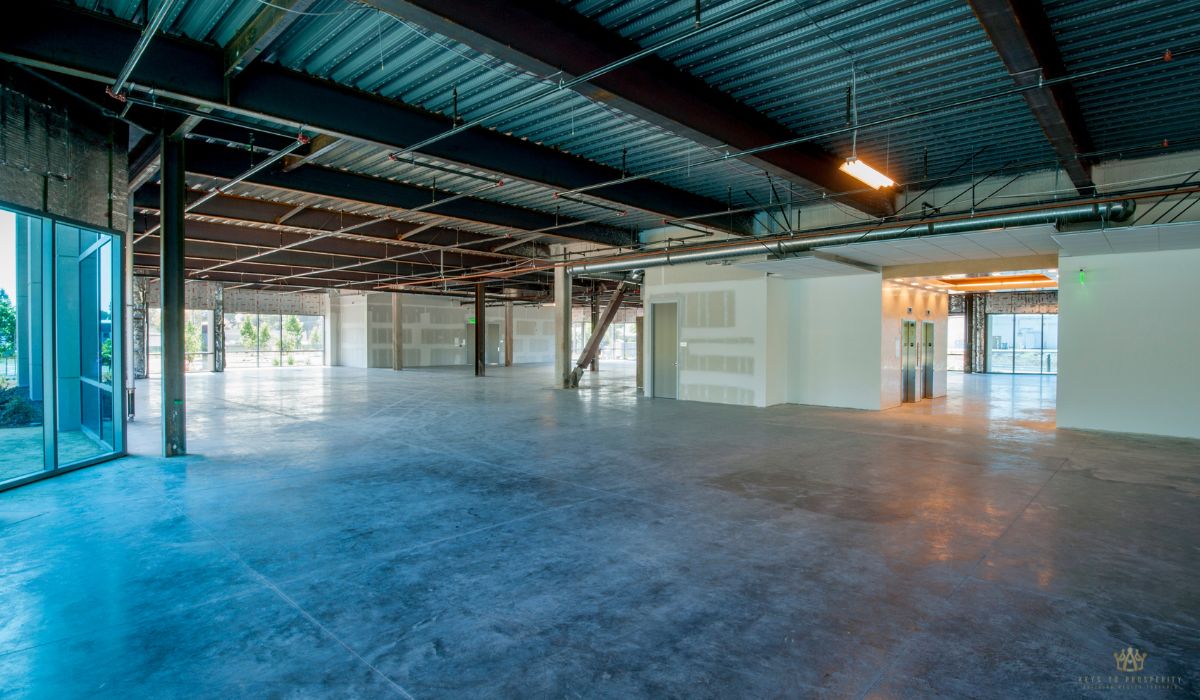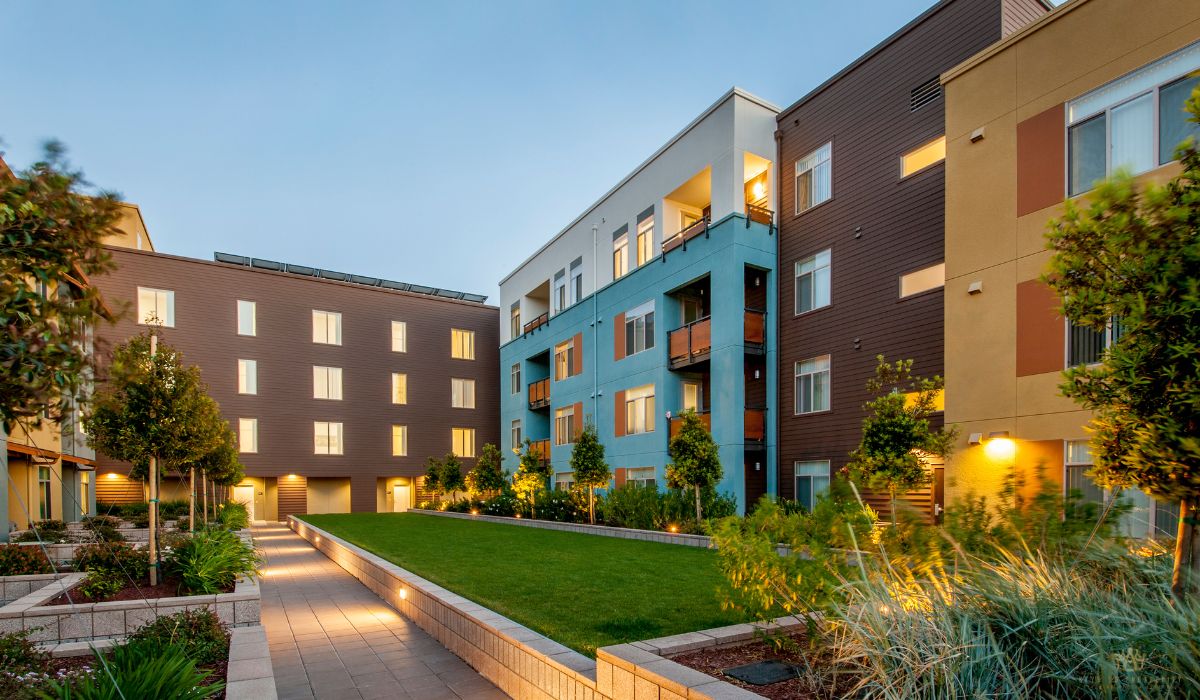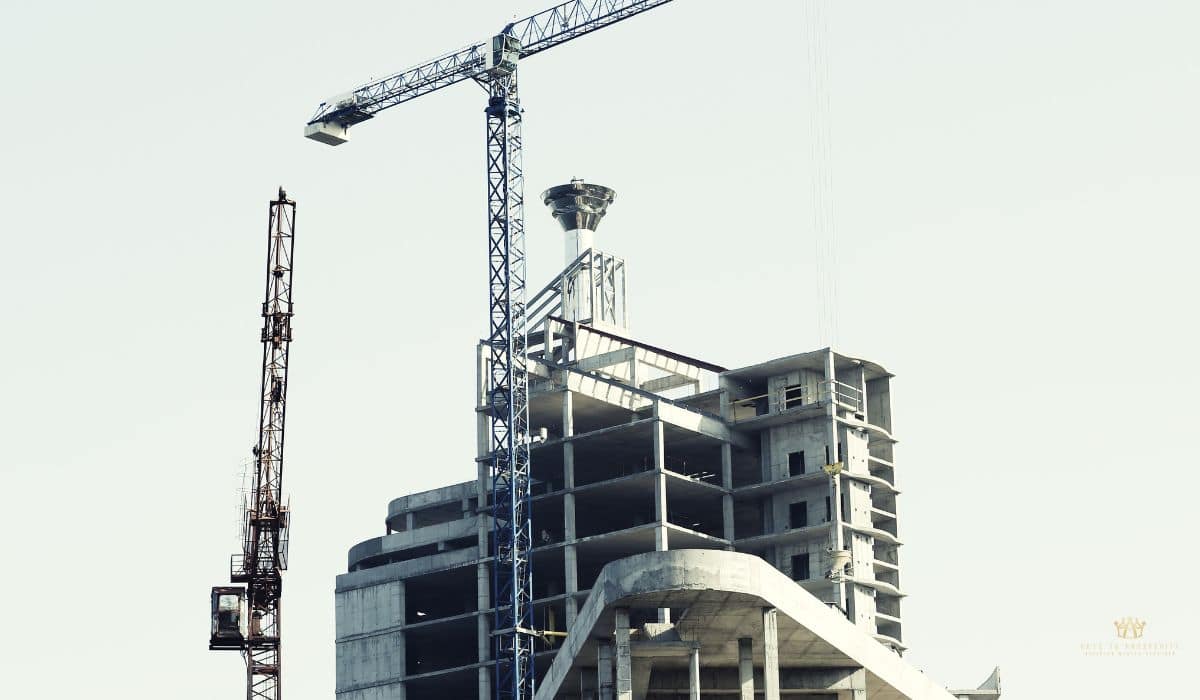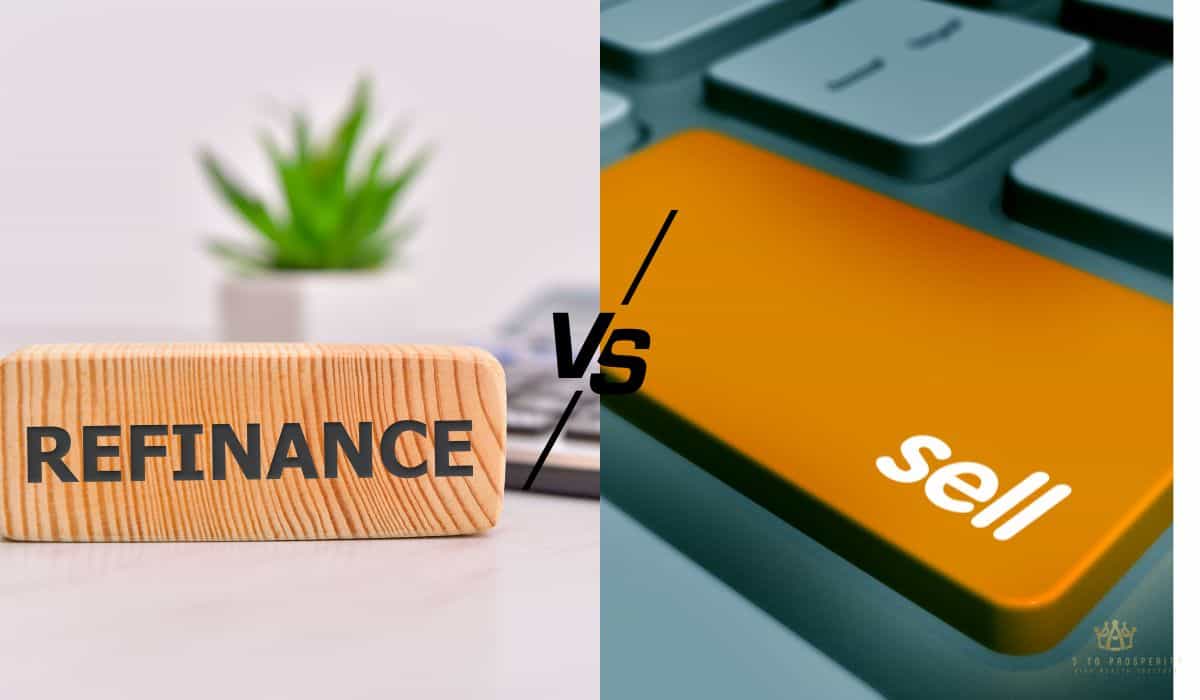
There’s a shift happening in commercial real estate, and savvy investors are paying attention.
Recent trends show a strong push toward value-add commercial real estate strategy, with over three-quarters of industry professionals pointing to falling property prices as the spark that’ll reignite investment activity in 2025.
Mixed-use assets are taking center stage, promising more flexibility and stronger cash flow potential.
From our experience, the investors seeing the biggest gains are the ones spotting underperforming commercial properties early, planning smart improvements, and boosting net operating income with precision.
This guide walks through the exact strategies working right now, so if you’re looking to increase returns, reduce operating expenses, and unlock smarter commercial real estate investment opportunities, you’re in the right place.
Short Summary
- Value-add commercial real estate focuses on improving underperforming properties to boost cash flow and increase equity.
- Key strategies include visualizing untapped potential, analyzing financials, listing strategic improvements, and executing a clear plan.
- Different property types—office buildings, multifamily units, retail centers, and industrial properties—each require unique approaches.
- Success depends on smart value-add renovation planning in commercial real estate and strong project execution.
- A clear commercial real estate development timeline management plan keeps improvements on track and aligned with investment goals.
- Long-term wealth building and capital preservation comes from scaling projects, reinvesting gains, and leveraging adaptive reuse strategy for commercial buildings when applicable.
What Are The Best Value-Add Commercial Real Estate Strategy Ideas?
Value-add commercial real estate is all about seeing what others miss. We’re talking about properties that may look rough around the edges but have serious upside if you know where to look.
If you’re trying to increase your return on investment without starting from scratch, these five steps, which we call VALUE, can help you uncover and execute a winning strategy:
1. Visualize Potential – Identify properties with hidden upside
2. Analyze Financials – Scrutinize operating expenses and income opportunities
3. List Improvements – Prioritize high-ROI physical and operational improvements
4. Unlock Value – Execute your value-add strategy with precision
5. Exit or Elevate – Refinance, sell for capital gains, or hold for cash flow
This strategy isn’t complicated, but it works like gangbusters. Let’s break down each step so you can apply it to your next deal. But first, check our guide on commercial real estate investing strategies to help you master the art of analyzing commercial properties.

Step 1: Visualize Potential In Underperforming Assets
This starts with knowing what to look for. We once walked through a 10-unit office building where half the spaces sat empty. Not because of low demand, but because the previous owner hadn’t updated it since 1998.
Spotting deferred maintenance, weak tenant retention, or low net operating income compared to local comps are strong signals.
Look for multifamily property value-add renovation strategy options in smaller secondary markets, where cap rates are higher, and competition is lower.
Also, if a building’s marketing is sloppy or tenant mix feels random, that’s often a sign of poor property management, which is fixable.
Step 2: Analyze Financials And Operating Expenses
The numbers tell the real story. Dig into operating expenses. Things like bloated landscaping contracts or inefficient HVAC systems can drag cash flow down.
We’ve reviewed properties where replacing outdated lighting alone saved thousands annually. Look at in-place rents, then run conservative projections for post-renovation increases.
Use a basic pro forma to compare what it’s earning now versus what it could earn. That delta is your opportunity.
Step 3: List Strategic Value-Add Improvements
Create a game plan. Start by targeting capital improvements that boost tenant satisfaction or retention. Common ones include:
- Adding secure package lockers
- Updating unit interiors (flooring, lighting, paint)
- Improving curb appeal or signage
Don’t skip operational tweaks either. For example, switching to digital rent collection systems has reduced late payments in multiple deals we’ve reviewed.
A solid capital expenditures plan helps keep upgrades aligned with your value-add renovation planning in commercial real estate goals.
Step 4: Unlock Value Through Strategic Execution
Once you’ve got your proposed business plan, stick to it. Property management plays a huge role. Sometimes just hiring the right firm improves tenant satisfaction and lowers turnover.
After upgrades, roll out rent increases gradually and pair them with perks like better amenities. One tip: stagger renovations to avoid losing too many tenants at once.
Position the property with better marketing and start attracting higher-quality tenants to elevate income.
Step 5: Exit Or Elevate Your Investment Position
You’ve got options now. You can refinance and pull out capital while keeping cash flow positive or sell and realize gains.
Many investors also consider a 1031 exchange to defer capital gains taxes and roll proceeds into a larger deal. Investors can double their portfolios in under five years using this strategy.
If the property’s stabilized and cash flowing well, sometimes the best move is simply to hold and enjoy steady rental income.
Each step adds value, but the key is sticking to a plan, making data-driven decisions, and executing with care.
What Is Value-Add Commercial Real Estate?
Some properties have hidden potential. It just takes a sharp eye and a smart plan to unlock it. That’s where value-add commercial real estate shines.
This strategy sits between stable, low-risk investments and aggressive development plays, offering a balance of risk and return. Let’s break it down.

Understanding The Risk-Reward Spectrum In Real Estate Investments
Value-add commercial real estate falls in the middle of the investment risk ladder. On one end, you’ve got core investments: think fully leased Class A office buildings in prime locations. These are low-risk, but the returns are usually modest.
On the opposite end, opportunistic investments like ground-up developments or distressed assets promise high returns but carry significant risk. Construction delays, permitting issues, and market shifts can throw those projects off track.
Value-add strategies aim to boost a property’s net operating income through physical upgrades or operational changes. They offer stronger returns than core properties without taking on the volatility of full-scale development.
In 2025, softening prices and rising interest rates are opening more doors in the value-add space. Investors are increasingly shifting toward these middle-ground plays, especially with market fundamentals changing in key metros.
When comparing value-add commercial real estate vs. development strategies, the difference often lies in control and timeline. Value-add deals rely on existing infrastructure, allowing for quicker improvements and predictable cash flow.
Development, on the other hand, may take years before generating income, and that’s if everything goes smoothly.
Identifying Value-Add Properties In Today’s Market
Finding the right property starts with spotting the right signs. Here are some characteristics that suggest a good fit for value-add commercial real estate strategies:
- Below-market rents with room for increases
- High vacancy rates in otherwise strong locations
- Deferred maintenance or outdated interiors
- Weak branding or unprofessional management
- Properties misaligned with current tenant demand
For example, imagine an office property with high vacancy, minimal online presence, and zero tenant amenities. With some light upgrades and better leasing strategies, occupancy could increase quickly.
Or take an apartment building where rents are low because the units haven’t been updated in two decades. Swapping carpet for vinyl plank, repainting units, and adding washers and dryers could easily justify a rent bump.
In industrial warehouse deals, we’ve seen upside simply by increasing clear height or modernizing loading docks. These strategic improvements don’t require major overhauls, but they significantly increase value and cash flow.
The key is to focus on properties with fixable problems, in markets with steady demand. Those are the assets that make a value-add commercial real estate strategy worth it.

How Can Value-Add Real Estate Investment Strategy Benefit You?
If you’re aiming to grow your wealth while maintaining steady income, value-add real estate might just be your best move. Let’s look at the key financial benefits and how this strategy can help you scale your portfolio over time.
Financial Benefits Of Value-Add Commercial Real Estate
With the right plan, value-add commercial real estate can give you the best of both worlds: monthly cash flow and long-term appreciation. Instead of waiting on market shifts to boost value, you take control.
Improvements like better property management, unit renovations, or adding new amenities let you force appreciation by increasing a property’s net operating income.
For example, say a small retail center in a solid location is running at 60% occupancy with under-market rents. Lease it up and raise those rents. Suddenly, you’ve driven up the asset’s value without relying on the market.
Another big advantage? Taxes. When you structure the exit right, 1031 exchanges let you defer capital gains taxes by rolling profits into another commercial property. That means more working capital, less tax drag, and stronger compounding.
And don’t overlook repositioning. We’ve seen tired office buildings turned into co-working spaces with modern finishes, and double the previous valuation.
A smart value-add commercial real estate strategy doesn’t just improve a building; it changes how it competes in the market.
Building A Value-Add Portfolio For Long-Term Wealth
You don’t have to start big. Many investors begin with a single value-add multifamily deal, then use profits to branch into other asset types: retail, industrial, even mixed-use.
Want to stay hands-off? Passive investors can join syndications, where experienced sponsors handle the operations. You still get a piece of the upside without managing contractors or tenants.
Over time, stacking wins from successful projects builds both capital and confidence. That opens doors to larger joint ventures and more complex strategies.
Also, when you layer value-add into a broader investment mix, say, with a few stable core assets for balance, you get steady income now, plus growth potential for the long haul.
That’s why we believe a value-add commercial real estate strategy is one of the most effective paths to building wealth that actually lasts.
Implementing Value-Add Strategies Across Different Property Types
Different types of commercial properties require different playbooks. What works for an apartment building might flop in a warehouse. Here’s how to tailor your value-add strategy depending on the asset class and where we’re seeing smart investors lean in for 2025.
Office Space Value-Add Strategies
Office space is still adjusting to the work-from-home shift, but that’s created opportunity for those willing to adapt.
- Technology integration is key. Think touchless entry systems, smart lighting, and high-speed connectivity, features that appeal to hybrid teams.
- Flexible layouts are gaining traction. Converting traditional layouts into co-working spaces or suites for small businesses creates versatility.
- Lease audits matter. Short-term leases or underperforming tenants may open the door to repositioning space for higher-quality occupants.
- Keep a pulse on demand. In some areas, demand is growing for smaller offices outside urban cores, especially among startups and regional firms.
For instance, an investor might take a dated mid-rise near a suburban medical hub, modernize it with energy-efficient systems and shared conference areas, and attract healthcare tenants who want turnkey space.
Multifamily And Retail Value-Add Opportunities
Multifamily remains one of the most reliable plays for value-add real estate.
- Cosmetic upgrades like stainless steel appliances, LVP flooring, and smart locks often justify rent bumps of 10–20%.
- Shared amenities, like community lounges, fitness centers, and package lockers, boost tenant satisfaction and allow for premium pricing.
- In retail, it’s all about flexibility. Repositioning older strip centers to include services like medical offices or boutique fitness can respond to e-commerce headwinds.
- Operational fixes, like improving online rent collection or adjusting staffing, can also improve retention and reduce expenses.

Picture a garden-style complex in need of love. By resurfacing the parking lot, updating units, and rebranding the property, you could boost NOI and exit within 24 months.
Industrial And Adaptive Reuse Value-Add Approaches
With industrial property value-add demand at an all-time high, real estate investors are modernizing older warehouses for modern logistics.
- Add dock doors, improve truck access, and upgrade electrical capacity for robotics or temperature control.
- Adaptive reuse is big in cities. Think old malls turning into medical centers or call centers. These deals require solid planning and a detailed commercial real estate development timeline management plan.
- Always run a thorough commercial property development risk assessment—zoning, environmental, and infrastructure all come into play.
One creative approach we’ve seen involves converting an underutilized office campus into last-mile distribution space. With demand surging in logistics, this type of adaptive reuse strategy for commercial buildings can unlock significant hidden value.
Final Thoughts
So, is value-add commercial real estate for seasoned pros? Not quite. It’s for anyone looking to boost returns through smart improvements and strategic planning. You don’t have to start big. Begin with one project, learn the ropes, and scale up.
Every property has a story, and with the right repositioning strategy for a commercial property, you can turn underperformance into opportunity. If you’re ready to explore value-add commercial real estate or join a team actively investing in it, now’s the time to take action.
Reach out today and let’s build something worthwhile together.
Frequently Asked Questions
What Does “Value-Add” Mean In Commercial Real Estate?
It refers to buying a property that’s underperforming and making improvements—either physical, operational, or both—to increase its value. This boosts income and equity without depending entirely on market growth.
How Do I Identify A Good Value-Add Investment Opportunity?
Look for signs like high vacancy rates, deferred maintenance, outdated amenities, or below-market rents. These often signal room for operational or cosmetic upgrades that can increase net operating income.
Can Value-Add Real Estate Work For Passive Investors?
Yes, passive investors can join value-add syndications to benefit from expert-led projects. This offers access to commercial deals without having to manage the property themselves.
What’s The Typical Timeline For A Value-Add Project?
That depends on the scope, but most require 12 to 36 months. A solid commercial real estate development timeline management plan keeps things efficient and helps ensure the investment stays on track.






